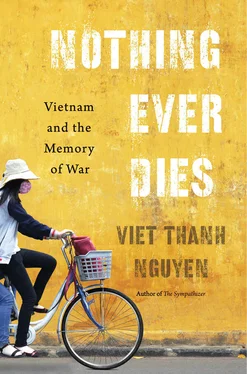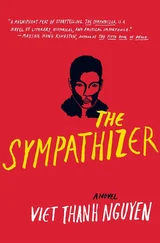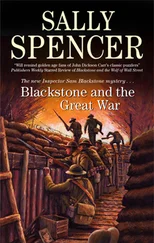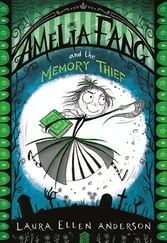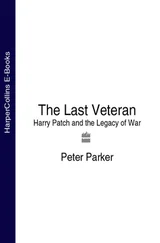The movement from the homeland to the adopted land, as refugees and exiles, and finally the return and the reconciliation, marks much of the literature. 24This is the case in Andrew X. Pham’s Catfish and Mandala (2000), about a Viet Kieu who returns to the homeland during the early, difficult years of economic reform in the 1990s, or Monique Truong’s The Book of Salt (2003), which follows the story of a young peasant in French colonial Vietnam who migrates to France to become the cook for Gertrude Stein and Alice B. Toklas. Or the literature is set in ethnic enclaves such as Little Saigon, as in Aimee Phan’s We Should Never Meet (2005), about orphans who have no choice in being moved to America. The literature overall is marked by the powerful stamp that says to America “we are here because you were there.” This stamp’s implications are not to be disregarded, but anticommunist liberalism contains them by holding communism responsible first for bringing America to Vietnam. Education also plays an important role in subduing these implications, particularly as it comes to represent the promise of the American Dream. Education is the invisible infrastructure of Vietnamese American literature, integrating it into the literary industry and the military-industrial complex, with authorial credentials being the baseline BA and the preferable MFA. In the common instance, the workshop model reinforces an averageness of taste, with a master of the craft leading students as they read and comment on each other’s work in a democratic appropriation of the communist self-criticism session. As writer Flannery O’Connor puts it, “so many people can now write competent stories that the short story as a medium is in danger of dying of competence. We want competence, but competence by itself is deadly. What is needed is the vision to go with it, and you do not get this from a writing class.” 25This competence or averageness reflects the mainstream values of the literary industry, the educational system, and American society, while reinforcing the literary world’s hierarchical nature. The MFA cultivates a standard of aesthetic excellence, and the literature produced from it is, as a result, competent in meeting that standard, which, almost by definition, cannot threaten the literary industry.
As Vietnamese American literature in English developed to meet this industrial standard, only one author emerged who was not college-educated or from the political or military elites, Le Ly Hayslip. Her two memoirs are also cowritten, which is as good as to be damned in the literary world. Her work may lack “competence” as defined by the literary industrial standard, but it possesses great vision — whether or not one agrees with that vision of humanity and reconciliation — which so many literary works lack. Outside of oral histories and besides The Book of Salt , her book is also the only major work that focuses on the life of a peasant. Most of the literature centers on those from the political, merchant, military, mandarin, elite, or middle classes, which all imply an elevated educational background in Vietnam for the protagonists or their parents. This elevated status shapes the worldviews of the protagonists — their vision, so to speak — and the settings of the stories, as well as their amenability to an anticommunist liberalism once they move to the United States (or once the American-born or raised protagonists come to consciousness). Given that the overwhelming majority of the Vietnamese are peasants, it is ironic that almost all the literature focuses on the classes above them. This irony is especially evident when American readers rely on a Vietnamese American literature produced by an urban, educated class to tell them something about the history and culture of the agrarian country and peasant people for which the war was fought.
While Vietnamese Americans are socioeconomically diverse, Vietnamese American authors are not, at least in terms of their education. This is especially evident with the wave of Vietnamese American literature that commenced in the 1990s with Catfish and Mandala and in 2003 gained momentum with The Book of Salt and The Gangster We Are All Looking For . Hayslip was the most visible Vietnamese American author until the arrival of this younger generation who, unlike her, could claim auteur status. They won major prizes and received wide recognition from the literary industry, their works considered “literary” in a way that Hayslip’s was not. While none of these authors had MFAs in creative writing, those that followed would, such as Aimee Phan and Nam Le. As Mark McGurl argues, the MFA program helped shape post — World War II American literature. 26Vietnamese American literature is no exception, being the expression not of Vietnamese Americans in general but of their most educated class. If using literature gives the Vietnamese American author a voice, it does not give a voice to the people for whom the author speaks, or is perceived to speak.
Class markers are evident in what Vietnamese American literature does not often address (the peasantry), as well as in an array of stylistic features that mark an authorial anxiety about being the educated elite of a racial minority, both resentful of and dependent on the literary industry. The most significant anxiety has to do with voice. College-educated writers, especially the American-raised ones, are aware of their status as the people who have the voice to speak of and speak for Vietnamese and/or Vietnamese Americans. This call to be both one’s self (which is how one becomes American) and to write about others (who, even if they are other, look like one’s self) is both a responsibility and a burden, as Monique Truong shows in her essay on “The Emergence of Vietnamese American Literature.” Truong’s essay takes place against two notable acts of speaking of and for Vietnamese Americans. In 1991, Robert Olen Butler won the Pulitzer Prize for his collection of short stories written from the perspective of Vietnamese Americans, A Good Scent from a Strange Mountain . Earlier in 1986, Wendy Wilder Larsen cowrote a collection of poetry with Tran Thi Nga, Shallow Graves: Two Women and Vietnam . For Truong, both of these books are problematic. The acclaim given to Butler’s work raises the issue of whether American audiences prefer hearing an American speaking for the Vietnamese rather than the Vietnamese themselves (Truong does not consider whether Vietnamese American writers simply were not good enough at the time to interest American audiences). In Larsen and Nga’s case, Truong uses the metaphor of the bow and the violin to describe their creative relationship, where Larsen is the “active, narrative-generating bow” while Nga is the “passive instrument.” 27Against these American literary acts that appropriate or subordinate Vietnamese voices, Truong makes a persuasive call for a Vietnamese American literature written by Vietnamese Americans.
This urge for self-representation and self-determination is deeply embedded in ethnic literature in general. If “ethnic” means anything in relation to literature, it is the sign of the ethnic speaking of and for the ethnic population. But the issues Truong raises in terms of appropriation and subordination are important for both outsiders and insiders. The ethnic author as an insider is not immune to the risks found in speaking for and speaking of others, even the others of one’s own community. Truong’s The Book of Salt dramatizes these risks and embodies them. In the novel, the peasant cook for Stein and Toklas — Binh — discovers that Stein has secretly written about him. Spoken for and about, he steals the book in revenge. In depicting these acts of mutual theft, Truong depends on speaking for and of Binh. The relationship of author to fictional character here parallels the relationship of author to a real community. Do Vietnamese American authors also run the risk of ventriloquizing through the creation of fictional characters that are also rather distant to them? If Larsen’s bow plays on Nga’s violin, does Truong do the same to Binh? No, because Nga is a real person while Binh is a character of Truong’s imagination. But the risks in speaking for and of others are not erased because the other is fictional.
Читать дальше
